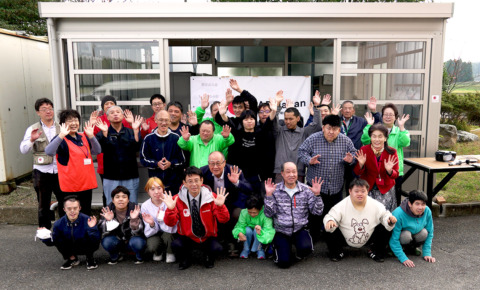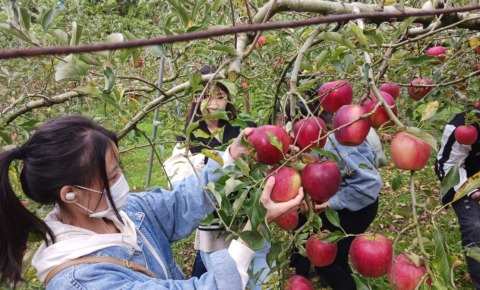A Half-year after the Noto Peninsula earthquake: Standing Together with Survivors in the Affected Areas
04/07/2024

Children walking through a residential area where houses remain collapsed in Wajima City, Ishikawa Prefecture, April 2024
A half-year has passed since the Noto Peninsula earthquake struck at the beginning of the year. It resulted in 299 deaths (including disaster-related fatalities), primarily in Ishikawa Prefecture. While progress has been made in restoring infrastructure and relocating residents to temporary housing, approximately 2,200 people are still forced to live in evacuation centers. Reporting from Mitsuru Namatame, who has been providing support to the front lines since immediately after the disaster.
New challenges after the emergency phase
I (Namatame) entered the disaster area two days after the earthquake on January 3, having driven six hours from neighboring Takaoka City in Toyama Prefecture. In Suzu City, Ishikawa Prefecture, where numerous buildings had collapsed and power and water outages persisted, evacuation centers were overflowing with evacuees.

AAR Namatame listening to a woman evacuee at the Wajima City Community Center in Ishikawa Prefecture, January 2024
AAR immediately started soup kitchens cooperating with partner organizations at evacuation centers. We assessed damages at facilities for people with disabilities and delivered bottled water, food, and hygiene products. AAR prioritizes support for people with disabilities, who often face the most challenging situations during disasters. Although they are also survivors, facility staff members commuted from evacuation centers to assist facility users.
We collaborated with many companies and organizations on emergency relief efforts. Due to prolonged water outages, donations from companies, including shampoo, toothbrushes, wet wipes, and portable toilets, were particularly welcomed. Pre-packaged food, beverages, sweets, fresh vegetables, and fruits from local farms were also used to support evacuees during soup kitchens, uplifting their spirits.
A half-year has passed since the earthquake, and the water supply has been restored in most areas. While the construction of temporary housing progresses, there has been a significant reduction in the number of soup kitchens in evacuation centers. However, many challenges remain evident beyond the emergency phase. Some survivors cannot move into temporary housing due to homes being classified as “partially collapsed” or “semi-collapsed,” and delays in public-funded demolition of damaged homes hinder steps toward rebuilding their lives.

Challenges Facing People with Disabilities
Many welfare facilities in Ishikawa Prefecture suffered building and equipment damages, with facility users and staff members themselves also being affected. Moreover, the number of work opportunities in welfare workshops (such as food processing, parts assembling, and recycling, etc.) has been drastically reduced, making it difficult to provide employmentsupport for people with disabilities within their communities. The earthquake revealed that isolated people with disabilities who had previously been unable to access public welfare services while living at home.
Support for Foreign Survivors

AAR Sakurai handing Thai rice to Lao and Vietnamese technical trainees in Himi City, Toyama, March 2024
The earthquake also posed challenges in supporting foreign survivors, such as Indonesian technical trainees engaged in fishing in the Noto region. AAR collaborated with local organizations experienced in foreign support, delivering food, hygiene products, and heating fuel to those who struggled to access public information or evacuation centers due to language and cultural barriers. We also facilitated connections with relevant organizations and local governments to address their needs.
Aiming for “Better Recovery”
Currently, AAR operates from a base in Nanao City and Wakura Hot Springs Resort, Ishikawa Prefecture. We provide support, such as supplying home appliances to survivors in temporary housing, assisting with disaster relief public support applications, and offering listening sessions and massages.
In temporary housing in Shika Town and Nakanoto Town, where AAR provide appliances which are not covered by public funds, AAR will also supply equipment for community rooms and conversation spaces to support building communities where survivors can help each other. This is based on the lessons learned from AAR’s ongoing support for the survivors of the Great East Japan Earthquake (2011).

“Meeting on the Noto Peninsula Earthquake for People with Visual Impairment”, organized by the Japan Disability Forum (JDF) in Nanao City, Ishikawa Prefecture, June 2024
For support for people with disabilities, we plan to restore and reopen welfare facilities and provide individual support for people with disabilities, collaborating with the Noto Peninsula Earthquake Support Center (Nanao City), which JDF established. An AAR staff member with visual impairment participated in a meeting held on June 20 at the center, discussing issues faced by massage therapists with visual impairment who are working in Wakura Hot Spring resort. The center and AAR are considering a new project to support them.
As for foreign residents, plans are underway to expand “Japanese language classes” to enhance communication with local residents. Working with Japanese education coordinators in the Noto region, AAR provided learning materials that Japanese teachers previously prepared on their own. AAR is also planning to organize disaster prevention events for foreign residents, mainly through Japanese language classes, thereby promoting disaster prevention networks among them.
The Sendai Framework for Disaster Risk Reduction, adopted at the Third UN World Conference on Disaster Risk Reduction held in Sendai City in 2015, calls for the practice of “Building Back Better” during the recovery and reconstruction phases. Making the most of our experience in supporting affected areas and people with disabilities, AAR will continue collaborating with the people in Okunoto, who are in their regional recovery and revitalization efforts.
We sincerely ask for your understanding and cooperation in AAR’s support efforts for the Noto Peninsula earthquake.
Please support
We appreciate your kind donation for our emergency relief efforts in Noto Peninsula Earthquake.



